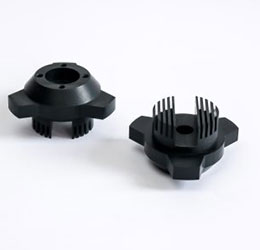Blogs
Looking for the old Kontakan site? It has been moved to Berkada.com.
Grow your friends list in Kontakan. Invite your friends to join our site! Click here to send an invitation.
Comparatively speaking, titanium alloy products have a very high specific strength when compared to other metal structural materials. Despite the fact that it has a strength equal to that of steel, it weighs only 57% as much as the steel equivalent. Also noteworthy are the characteristics of titanium alloy, which include a low specific gravity, high thermal strength, good thermal stability, and corrosion resistance; however, titanium alloy materials are difficult to cut and have a low processing efficiency as a result of the low processing efficiency of titanium alloy materials. As a result, the question of how to overcome the difficulty and low efficiency of titanium alloy processing has always been one that has been considered urgent and must be addressed as soon as possible.

The exact reason for the difficulty in processing titanium alloy is still a mystery to scientists.
Because titanium alloy has a low thermal conductivity, the cutting temperature must be extremely high when processing titanium alloy in order to prevent cracking from occurring. According to the same process parameters, TC4 steel has a cutting temperature that is nearly twice as high as that of 45 steel, and the heat generated during processing is difficult to dissipate through the piece of work. When working with an alloy that has a low specific heat, the local temperature rises rapidly during processing. Because of this, the operating temperature of the tool is extremely high, the tip of the tool is severely worn, and the tool's service life is reduced.
For this reason, and because titanium alloy has a low modulus of elasticity, it is easy for the surface of a processed part to rebound, and the processing spring back of thin-walled parts is more severe. It is simple to generate significant friction between the flank face and the processed surface, resulting in tool wear and chipping of the processed surface as a result of the friction.
Ti-alloys have a high degree of chemical activity and are easily reacted with elements such as oxygen, hydrogen, and nitrogen when heated to high temperatures. This increases their strength while simultaneously decreasing their plasticity in the process. Because of the formation of an oxygen-rich layer during the heating and forging processes, machining is made more challenging.
Titanium alloy materials are cut according to their physical properties.
The material of the tool used, the cutting conditions used, and the length of time the tool is used will all have an impact on the efficiency and economics of titanium alloy cutting.
1. Choose tool materials that are affordable in terms of price.
In light of the properties, processing methods, and processing technical conditions of titanium alloy materials, a reasonable selection of tool materials should be made. CNC Aerospace Machining is preferable if the material used for tooling is more widely available, less expensive, and has good wear resistance, high thermal hardness, and sufficient toughness to be used.
2. Make the cutting environment more conducive.
The rigidity of the machine tool-clamp-tool system has been significantly increased. A proper adjustment of the clearance between each component of the machine tool should be made, and the spindle's radial runout should be kept to a minimum. In order to be effective, the clamp work must be firm and rigid in its construction. Whenever the chip capacity is sufficient to improve the strength and rigidity of the tool, the tool's cutting part should be kept as short as possible, and the thickness of the cutting edge should be increased to achieve the shortest cutting part as much as possible.
Heat treatment of the material that has been processed to the proper temperature.
To improve the machinability of titanium alloy materials, heat treatment is used to modify the performance and metallographic structure of titanium alloy materials.
4. Determine a reasonable amount of cutting to be done.
It is recommended that the cutting speed be kept to a bare minimum. In part because cutting speed has a significant impact on the temperature of the cutting edge, it is reasonable to assume that the higher the cutting speed, and the more pronounced the increase in temperature of the cutting edge, the higher the cutting speed. When it comes to tool life, the temperature of the cutting edge has a direct impact on how long it will last. Therefore, choose a cutting speed that is appropriate for the job.
Topics:
cnc aerospace machining
Be the first person like this
Be the first person to like this.
Be the first person like this






